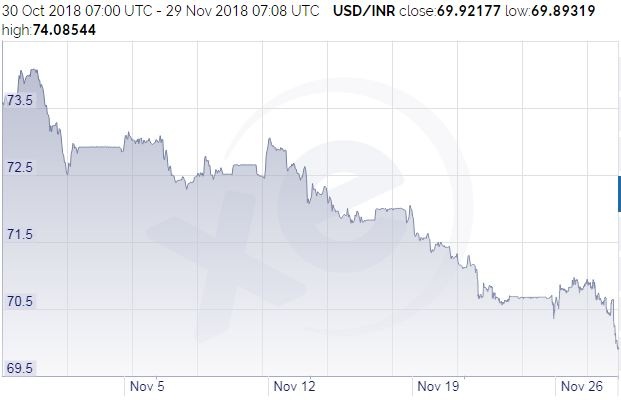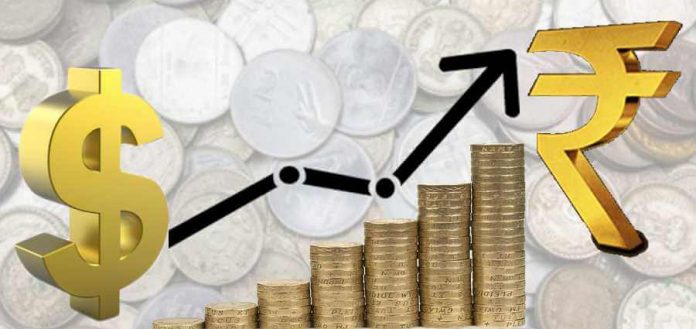The value of Rupee against dollar has hit a three-month high with bond yields touching the lowest mark since the month of May. The price of rupee against dollar touched three-month high to reach 69.90, the strongest since August 28 while the bond yields have reached at 7.60 percent, lowest since May 8. The value moved southward by 4 basis points within a single day on Nov 28. There were two primary reasons behind the rally of rupee-the dovish stance of US Federal Reserve chairman Jerome Powell on policy rate hike and falling crude oil prices. Fed chair Jerome Powell on Wednesday said that US policy rates were ‘just below’ neutral, less than two months after saying rates were probably ‘a long way’ from that point. Investors from capital rich western countries pull their money out of developing countries in case, Federal Reserve hikes the rates. The capital flow from the economy negatively impacts the value of Rupee. Second major reason behind fall of Rupee was the exponential decline in crude oil prices in international markets.

A few weeks back, rupee made southward trend due to many global factors which include, the rise in oil prices and trade war between major economies. The rise in oil prices has badly impacted the positive sentiment in major Asian economies like China, South Korea, and India. These nations heavily depend on oil imports and thus, the economies of these countries saw a decline. In the light of rising oil prices, the foreign investors from capital rich western economies pulled out money from Asian countries in fear of dwindling public finances and invested in American markets which pushed the dollar northwards. Therefore, it is pretty clear that the reason behind falling rupee was primarily global and the currencies of other economies of Asia also fell, and in most of the cases, the decline has been more than that of the Indian currency.
The left-liberal media establishment assisted the opposition in spreading fear about the declining rupee as well as overall health of the domestic economy. The fall in the value of rupee was primarily driven by sentiments and fear factor rather than weak macroeconomic fundamentals. Once the fear of trade war was gone after positive developments between the Chinese and American government, the oil prices started to decline and the rupee strengthened. However, once the condition of rupee improved, none of the mainstream media organization bothered to report this.
Modi government signed a USD 75 billion ‘currency swap agreement’ with Japan which helped in bringing rupee back on track. India’s currency swap agreement worth USD 75 billion will address the rise in Current Account Deficit (CAD) and fall in Rupee’s value from time to time. But the left-liberal media establishment neither appreciated the government’s effort to improve the condition of rupee nor reported about the appreciated value of rupee. The disdain of Lutyens’ media towards Modi government is very much visible from the overall reporting on the rupee issue. The short-sighted and ideologically polarised anchors and journalists in English media reported the fall of rupee in a way as if the macroeconomic conditions of the country had become worse and the country was on the verge of becoming a defaulter in the international payments system. Indian media exaggerates every issue and the TV shows lack mature content. The Prime Time shows on TV give a sense that the world will fall apart on just the other day. The media needs to behave more responsibly and should have the national interest in the top of their priority list.































